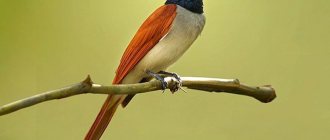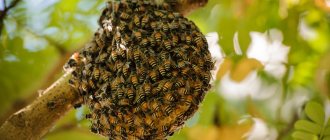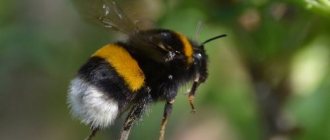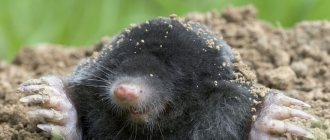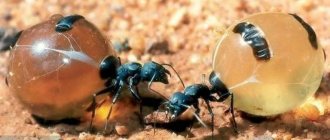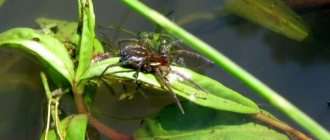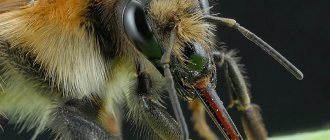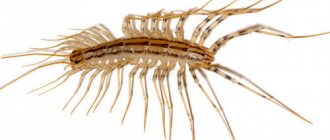The common flycatcher insect, Scutigera coleoptrata, is a small, typically yellowish-gray centipede with 15 pairs of long legs. Originating in the Mediterranean region, this species has spread to other parts of the world. Can live in human houses and apartments. hence the name house flycatcher. Insectivore, kills and eats other arthropods such as arachnids.
The common flycatcher is like a spider on steroids. Your first reaction to her is to kill. But no matter how scary it may look, the house centipede, Scutigera coleoptrata, is truly harmless. And if you have other pests in your apartment or house, it will be beneficial.
Appearance and features of the flycatcher
The dimensions of the flycatcher are 25-60 mm in length. The color is brown or yellow-gray with three dark longitudinal stripes, the legs are also striped. On the head there is a pair of long and sensitive antennae covered with thick hairs. The whiskers and the last pair of legs may be longer than the entire body (especially in females). The scutigera has a small mouth with claw-like claws containing a venom gland.
Morphology
The body of an adult Scutigera coleoptrata ranges from 25 to 35 mm in length. Up to 15 pairs of long legs are attached to the rigid body. Together with the antennae, they create a centipede with a length of 75 to 100 mm. Thin legs allow you to reach amazing speeds of up to 0.4 meters per second, running along the floor, up walls, along ceilings.
The body is yellowish-gray and has three dark dorsal stripes running along its entire length. The legs also have dark stripes. The tail-like hind legs have the appearance of antennae. When at rest, it is not easy to distinguish the head from the back.
Unlike most other centipedes, house flycatchers have well-developed faceted eyes.
How many legs does the centipede flycatcher have?
The outer exoskeleton of the flycatcher consists of chitin and sclerotin. The flattened and elongated body of the house centipede flycatcher is divided into 15 segments, each of which has a pair of legs. The total number of legs is 30. Centipedes run very quickly due to their long legs and short body.
A newborn flycatcher has only 8 legs (4 body segments). The rest grow over time, after several molts.
Interestingly, if one or more legs are lost, new limbs grow in their place after some time.
The last pair of legs look like whiskers due to their increased size. The front legs are shorter and act as jaws, helping it to capture and hold prey.
Interestingly, the legs of the domestic scutiger gradually lengthen towards the back of the body. This allows the hind legs to cross in front of them, rising up and out, preventing tangling. The hindmost legs are twice as long as the foremost. Thanks to such a wonderful structure of the legs, the centipede flycatcher runs quickly and does not stumble.
Biological details
The faceted eyes of S. coleoptrata are sensitive to daylight and very sensitive to ultraviolet radiation. They do not instantly change direction when light suddenly falls on them, retreating into a dark shelter.
Some of the plates covering the body segments fused and became smaller during the evolution to the modern state of S. coleoptrata. The resulting discrepancy between the segments and the dorsal plates (tergites) is the cause of the rigid body.
Another feature that distinguishes S. coleoptrata from other centipedes is that proteins for oxygen transport are found in their hemolymph.
Habitat and lifestyle
Millipedes live almost all over the world, they can be found throughout Europe, Asia, Africa and North America. Quite often they are spotted in Crimea, Ukraine, Russia, Moldova, Kazakhstan, Belarus, the Volga region and the Caucasus. Flycatchers prefer temperate climates.
They are typically found in wet areas, such as rotting logs, under trees, under rocks, caves, trash, or in piles of fallen leaves and grass clippings. When centipedes enter human territory, they settle in the most humid corners - in basements and cellars, bathrooms, toilets, under the floor of a private house, in a bathhouse, in a greenhouse and greenhouse. At night, the centipede can be found in dry places, for example, on the floor in a room.
Most centipedes have poor eyesight and track their prey using touch and smell. But the scutiger centipede has good vision and additionally “scans” the environment with its antennae with sensitive sensory receptors. The antennae help her capture any air fluctuations, drafts, decrease or increase in temperature.
Millipedes are primarily carnivorous and obtain most of their moisture needs from their prey. Most house centipedes are nocturnal and hunt mainly for flies, spiders and sometimes eat plant tissue.
Spreading
C. coleoptrata is native to the Mediterranean region. But it has spread to most of Europe, Asia, North and South America, Chile, and Los Lagos regions.
South Africa - found in the Western Cape, Cape Town area (Vredehoek, Mowbray, Edgemead, Green Point, Zonnebloem, Woodstock, Stellenbosch, Gordon's Bay), KwaZulu-Natal province, Pietermaritzburg.
Learn more 10 simple tips for cleaning your home from pet hair
The flycatcher can be found in eastern and southern Australia, from Perth to Adelaide, South Australia, to Sydney, New South Wales, Tasmania. Other countries where they have been discovered include New Zealand, Japan, and South Korea. Relatively rare for South and Southeast Asia.
What does the centipede flycatcher eat?
The flycatcher is a predator; it infects its prey with poison and then eats it. It feeds on flies, termites, spiders, cockroaches, fleas, termites, moths, silverfish, aphids, fireflies, worms, snails, beetle and fly larvae, as well as other small arthropods. The flycatcher does not disdain plant food. In some cases, it can even feed on house plants.
The flycatcher waits for its prey, sitting motionless in ambush. Having seen or smelled the prey with its mustache, the centipede gives chase and grabs the insect with its long legs, injects poison and begins to eat the prey. If the hunt was successful and several insects were caught at once, she holds them with her legs, eating them in turn.
Interesting behavior
The flycatcher makes good use of its long legs. Can move at alarming speeds - the equivalent of over 64 kilometers/hour in human terms. This will scare even the most die-hard arthropod lover. Athleticism doesn't have to scare you. The house flycatcher is simply well equipped to stalk and catch prey.
Find out more Rat bite: what it looks like, how dangerous it is, how to treat it
Just as their speed helps them capture prey, it also allows centipedes to avoid predators. If the predator manages to grab the leg, it throws the limb away and runs.
Oddly enough, the severed leg will continue to move for several minutes after its owner leaves the stage. They shed even as adults and regenerate lost limbs.
Reproduction and lifespan
During courtship, males circle and touch other centipedes in search of a receptive female. Once a partner is found, the male weaves a silk pad (spermatophore) into which he places his sperm. The female then takes the sperm sac and fertilizes her eggs. Courtship and breeding occur during the warmer months of the year.
After some time, the female lays about 63 eggs. By the way, a female can lay about 150 eggs in her entire life.
Female house centipedes lay their eggs in the ground and cover them with a sticky substance. The mother is not very protective of her larvae, but after hatching, she provides protection to her offspring for about two weeks by living near them.
A flycatcher hatched from an egg has only four pairs of legs. As it matures, the arthropod molts and grows additional legs until it becomes an adult with 15 pairs of legs.
The average lifespan of a flycatcher is from 3 to 7 years.
Natural enemies
The natural enemies of the centipede scutiger are birds and other animals. But quite a few animals prefer centipedes as food. Therefore, the main threat to them is a person who exterminates all the “creepy creatures” that come his way.
Disinsection services remove not only harmful creatures from homes, but also useful creatures such as flycatchers.
Millipede populations are declining due to ongoing human activity in the areas of logging, farming and pesticide use. The extinction of this species could have a negative impact on the ecosystem, which could lead to even more harmful insects.
Does the flycatcher bite? Is it dangerous for humans?
If a centipede feels threatened, it can deliver a painful bite that will break the skin and cause swelling and pain comparable to a bee sting. But the poison secreted by the flycatcher is not dangerous to humans and domestic animals. Local damage and redness will go away in a couple of days.
In most cases, the centipede cannot even bite through human skin, so there is no need to be afraid of a bite.
The flycatcher is afraid of people, so it will not purposefully attack a person or try to get into his ear.
Behavior
They feed on spiders, bed bugs, termites , cockroaches, silverfish, ants, and other domestic arthropods. The poison is secreted through the forcipules. Not through the lower jaw, so they burn and do not bite. These are night hunters.
Despite their developed eyes, they rely on their whiskers to hunt. The antennae are sensitive to both odors and tactile information. They use mandibles and legs to hold prey. Thus, they can deal with several small insects at the same time.
To catch prey, they either jump on it or use their legs in a technique described as a "lasso". The use of legs to subdue prey is also described.
They have adapted their feeding pattern to the type of danger the prey may pose to them. For wasps, retreat after applying the poison to give it time to take effect.
When the flycatcher is at risk of becoming prey, it can detach the legs that are trapped. It has been observed that Crimean flycatchers groom their legs by curling up around them.
1902, CL Marlatt, US entomologist, made a brief description:
“You can often see them rushing across floors at very high speeds, sometimes stopping suddenly and remaining absolutely motionless. Then they resume their rapid movements, rushing straight at the inhabitants of the house, especially women, obviously with the desire to hide under their dresses. They create a lot of fear.”
Why can't you kill a flycatcher?
Although house flycatchers, scutigers, are scary-looking and move quickly, they provide us with a great service. Centipedes protect our homes from harmful insects that carry various bacteria and spoil our food and clothing.
For example, a moth is not as scary in appearance as a flytrap, but it can irrevocably destroy your expensive clothes or fabric upholstery. While the centipede does not damage furniture, books, clothing and food, but on the contrary, it destroys all known pests.
If you have a Scootiger centipede in your house, leave it alone. Just try to put things in order in your apartment or summer cottage. Remove firewood from the ground and burn fallen leaves. Ventilate the room more often and try to reduce the percentage of air humidity.
If there are too many centipedes in an apartment or country house and you see them every day on your way, then you should think about forcibly reducing their population. The methods described below will help with this.
Interaction with people
Different from its tropical cousins with shorter legs but much larger, S. coleoptrata can live its entire life in an apartment, usually at ground level. Although often frightening unwitting housemates with their appearance and amazing speed, they are generally considered harmless to humans.
Bites are rare. However, the tips of flytraps are not strong enough to easily penetrate human skin. The stings are similar to a bee sting and the venom causes redness and swelling.
Methods for eliminating flycatchers in an apartment include drying out the areas where they live, eliminating large populations of insects in the premises, and repairing cracks in the walls.
The alternative is to allow them to live while allowing pests such as cockroaches, flies, moths, bedbugs, silverfish, earwigs .
How to get rid of flycatchers in an apartment and a private house?
The most effective way to prevent a centipede infestation is to reduce the humidity in and around your apartment or home. Remove piles of leaves and grass clippings, logs, rocks and stones from your property. Provide adequate ventilation for basements, attics and garages. Seal holes, cracks and crevices that allow centipedes to enter your home. Buy a dehumidifier or start ventilating the room more often.
The second reason why centipedes have settled in your apartment and do not want to leave it voluntarily is the abundance of other insects that they feed on. Take a comprehensive approach to pest control: lay out traps, use modern gels and aerosols.
Reducing cover for millipedes is an important step in controlling them. Seal cracks and crevices in concrete slabs and block walls using appropriate fillers (cement, plaster, foam, etc.). Seal sump pump covers with mesh and sealant. Install window screens in your basement drain to prevent millipedes from entering dry sumps.
Chemical pest control
Chemicals against flycatchers must be used very carefully, especially if there are children and insects in the house. You should not use such substances if the indicated folk methods and preventive measures have not been tried - perhaps the parasites can be driven away with “a little blood.”
The most commonly used products are those intended for cockroaches: all kinds of gels and crayons. In addition, aerosol insecticides such as Raptor, Combat or Moskitol are also quite effective.
Typically, sprays are used topically, spraying directly onto individuals, but you can also try treating areas where parasites accumulate. It is important to remove all pets and household members from the home during treatment and use protective equipment for the skin, eyes and respiratory tract.
Mechanical methods of struggle
Mechanical methods include sticky traps, vacuuming, pressing, and trapping.
By the way, sticky traps are not very effective against flycatchers. They will simply leave a few of their legs on the Velcro and run away, and after a while they will grow new legs.
It's best if you just catch the centipede in a jar and take it outside.
